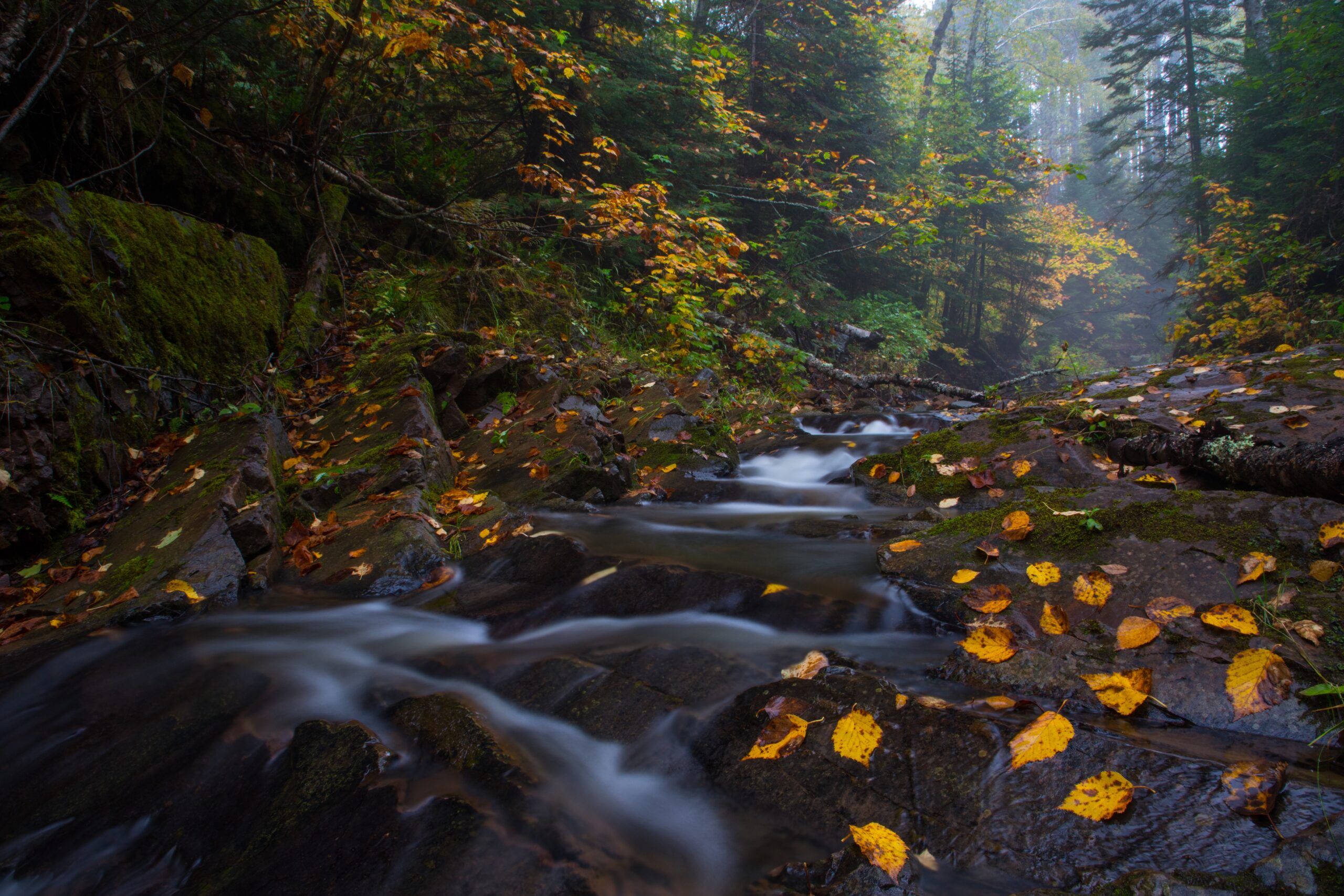
The Unique North Shore Forest Ecology
Minnesota Department of Natural Resources (DNR) ecologists have identified three native plant community types that are uniquely associated with the North Shore coastal forest: Upland White Cedar Forest, North Shore Spruce-Fir Woodland, and Lake Superior Bedrock Shrubland. The DNR defines native plant communities as “groups of native plants that interact with each other and with their environment in ways not greatly altered by modern human activity or by introduced organisms.” Classifying plant communities provides a common language for those involved in using, restoring, or conserving the resources in Minnesota’s native plant communities.
Upland White Cedar Forest
In this community, white cedar is the dominant canopy tree in a forest also composed of quaking aspen, paper birch, balsam fir, white spruce, and sometimes white pine. Starflower, blue-bead lily, and wild sarsaparilla are the most common plants in the ground layer.
North Shore Spruce-Fir Woodland
This community’s open tree canopy is composed of balsam fir, white spruce, paper birch, and black spruce. The forest floor is covered by many species of lichens and mosses. The soil is particularly thin with a lot of exposed bedrock. Low shrubs like blueberry and bush honeysuckle are common. Common flowers include Canada mayflower, bunchberry, and large-leaved aster.
Lake Superior Bedrock Shrubland
On cliffs and rocky outcrops, this community is composed of patchy vegetation of shrubs, wildflowers, grasses, sedges, lichens, mosses, and scattered trees that are often stunted by the thin soil. Common shrubs include Juneberry and hawthorns. Trees include balsam fir, white spruce, paper birch, and mountain ash. Lichens rather than mosses cover areas of exposed bedrock. Visit the Minnesota DNR website for more information about Minnesota’s Native Plant Communities.
This information is available is all in our publication, Restoring Lake Superior’s Coastal Forest and by viewing this STORY MAP about restoring conifers along the North Shore.